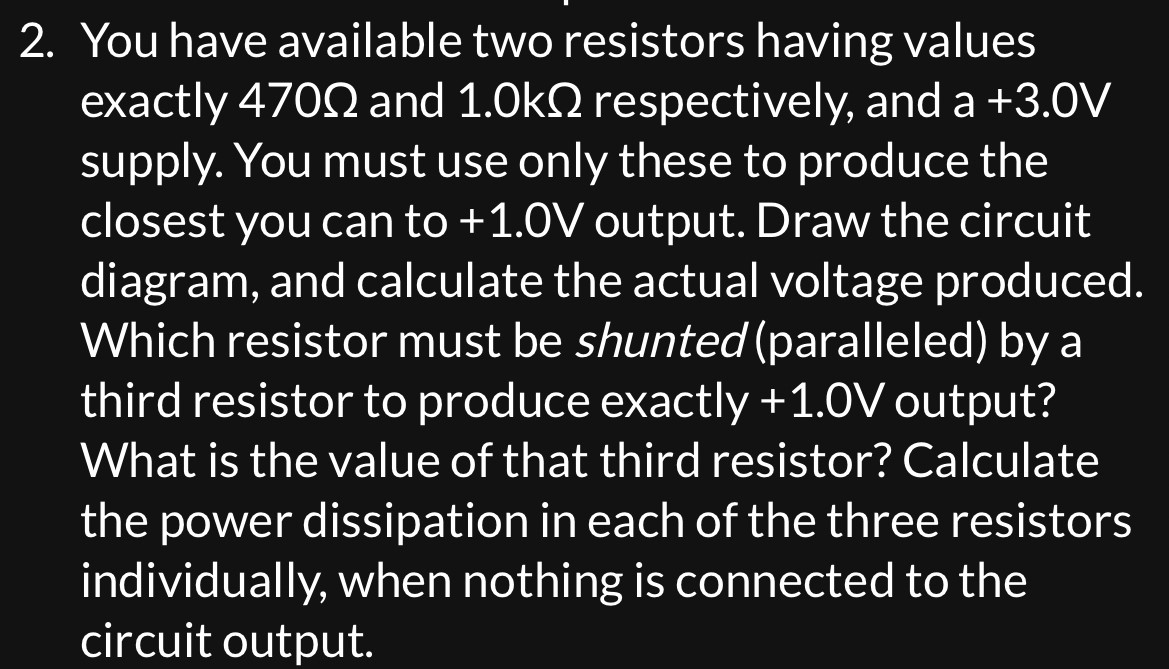You have available two resistors having values exactly 470 Ω and 1.0 kΩ respectively, and a +3.0 V supply. You must use only these to produce the closest you can to +1.0 V output. Draw the circuit diagram, and calculate the actual voltage produced. Which resistor must be shunted (paralleled) by a third resistor to produce exactly +1.0 V output? What is the value of that third resistor? Calculate the power dissipation in each of the three resistors individually, when nothing is connected to the circuit output.
